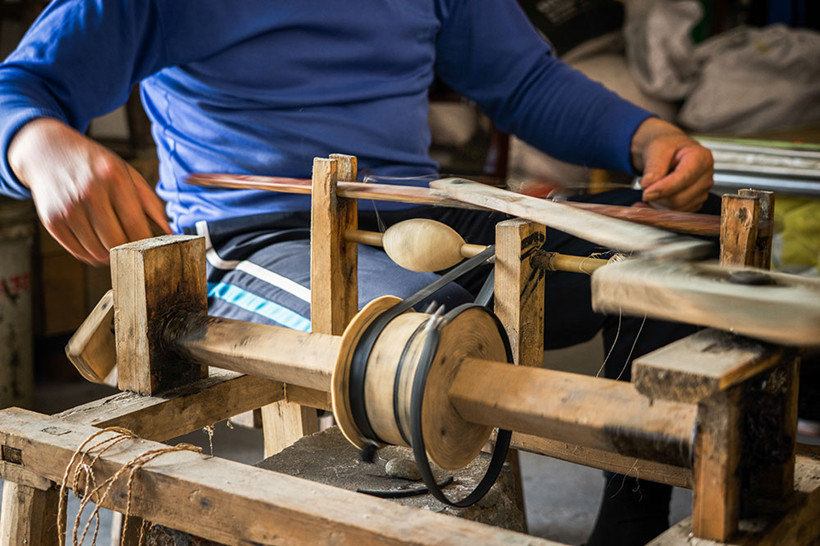By Xinyi Li, EDITOR
This is a piece of ramie, which is seemingly unremarkable but has a history of thousands of years. With a simple texture and silk-like touch, the artificial product is much more like a masterpiece of Mother Nature. Rongchang, the hometown of linen in China, is a place that gathers the resources of Bashu area and contributes to the prosperity of the country. Rongchang ramie is committed to entering into tens of thousands of families.

Rongchang ramie is committed to entering into tens of thousands of families
As the earliest fabric in China, Rongchang ramie originates from the Han Dynasty and has a production history of over 1,000 years. The linen has so many nicknames, for example, “linen cloth” in modern times, “Shu cloth” in the Han Dynasty, “spotty cloth” in the Tang Dynasty, and “crude cloth” in the Song Dynasty. In addition, it is also known as the living fossil of textiles due to its long history.
The ramie is as light as cicada’s wings, as thin as rice paper, as flat as bright mirror, and as smooth as silk cloth. The crude one is in its natural color of faint yellow and is ideal for Chinese painting, while the prepared one after bleaching can be dyed and printed for making garments.

A worker is looming Rongchang ramie
The linen cloth was one of the tribute fabrics in ancient times and has been included into the protection list of national intangible cultural heritages nowadays. During the Tang and Song Dynasties, Rongchang ramie was the treasure most favored by the royal family and dignitaries. During the Guangxu period (1871-1908) in the Qing Dynasty, it was sold to Korea, Japan, and Southeast Asia and earned a reputation overseas. In the early 20th century, Rongchang boasted more than 5,000 sets of looms and an annual output of 700,000 bolts of ramie, most of which were exported to the countries and regions including Korea, Japan, Europe, America, and Southeast Asia.
The raw material of this linen cloth of Chongchang is ramie, also known as “the grass of China” around the world. Farmers plant ramie in spring and harvest it three times a year. ramie has rigorous production processes. The artisanal producers need to extract the fiber, roll the wefts, pull out the warps, string the wefts and warps through the shuttles, swab rice milk, weave, dye, and adjust the shapes. Generations have inherited these multistep processes and spinning techniques.

The raw material of this linen cloth of Chongchang is ramie, also known as “the grass of China” around the world
In October 2016, the creative artworks made of Rongchang ramie stepped on the stage of China Fashion Week—a platform of fashion in China with great international influences. Those artworks showed the cultural confidence of Rongchang and the unique beauty of the ramie, after thousands of years of inheritance. Later, Rongchang ramie was displayed on the “China Musings: A Fashion Journey” exhibition of China-Australia Year of Tourism. It has become China’s first domestic brand appeared on this China-Australia event and the representative of the original design of China. Since then, Rongchang ramie has become a bright new star, and people can see its appearances on the stages of the world fashion shows.

The fashionable clothing of Rongchang ramie
In addition to being a raw material for fashionable clothes, Rongchang ramie can be painted. Liu Haishi is a folk painter from Rongchang, and his work, The Golden Summit of Mount Emei, has become a permanent collection of the Art Center of the Great Hall of the People.
Source: CQCB
By continuing to browse our site you agree to our use of cookies, revised Privacy Policy and Terms of Use. You can change your cookie settings through your browser.
For any inquiries, please email service@ichongqing.info